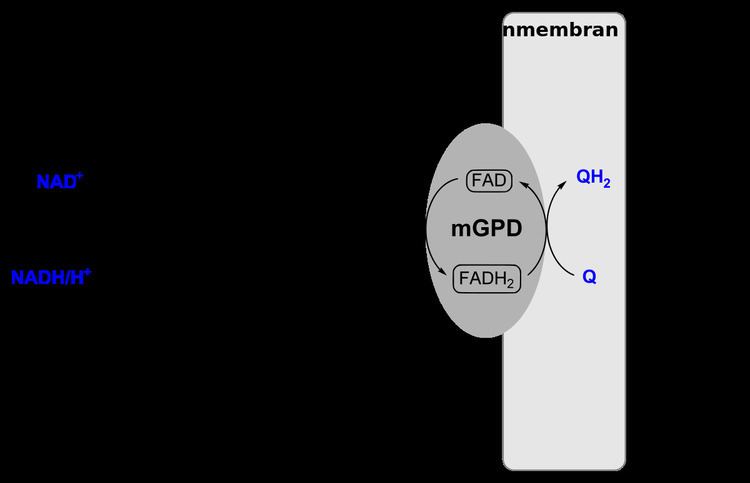 | ||
The glycerol-3-phosphate shuttle is a mechanism that regenerates NAD+ from NADH, a by-product of glycolysis. Its importance in transporting reducing equivalents is secondary to the malate-aspartate shuttle.
Contents
Reaction
In this shuttle, the enzyme called cytoplasmic glycerol-3-phosphate dehydrogenase 1 (GPDH-C) converts dihydroxyacetone phosphate (2) to glycerol 3-phosphate (1) by oxidizing one molecule of NADH to NAD+ as in the following reaction:
Reverse path
Glycerol-3-phosphate gets converted back to dihydroxyacetone phosphate by an inner membrane-bound mitochondrial glycerol-3-phosphate dehydrogenase 2 (GPDH-M), this time reducing one molecule of enzyme-bound flavin adenine dinucleotide (FAD) to FADH2. FADH2 then reduces coenzyme Q (ubiquinone to ubiquinol) which enters into oxidative phosphorylation. This reaction is irreversible.
Function
The glycerol-3-phosphate shuttle allows the NADH synthesized in the cytosol by glycolysis to contribute to the oxidative phosphorylation pathway in the mitochondria to generate ATP. It has been found in animals, fungi, and plants.
